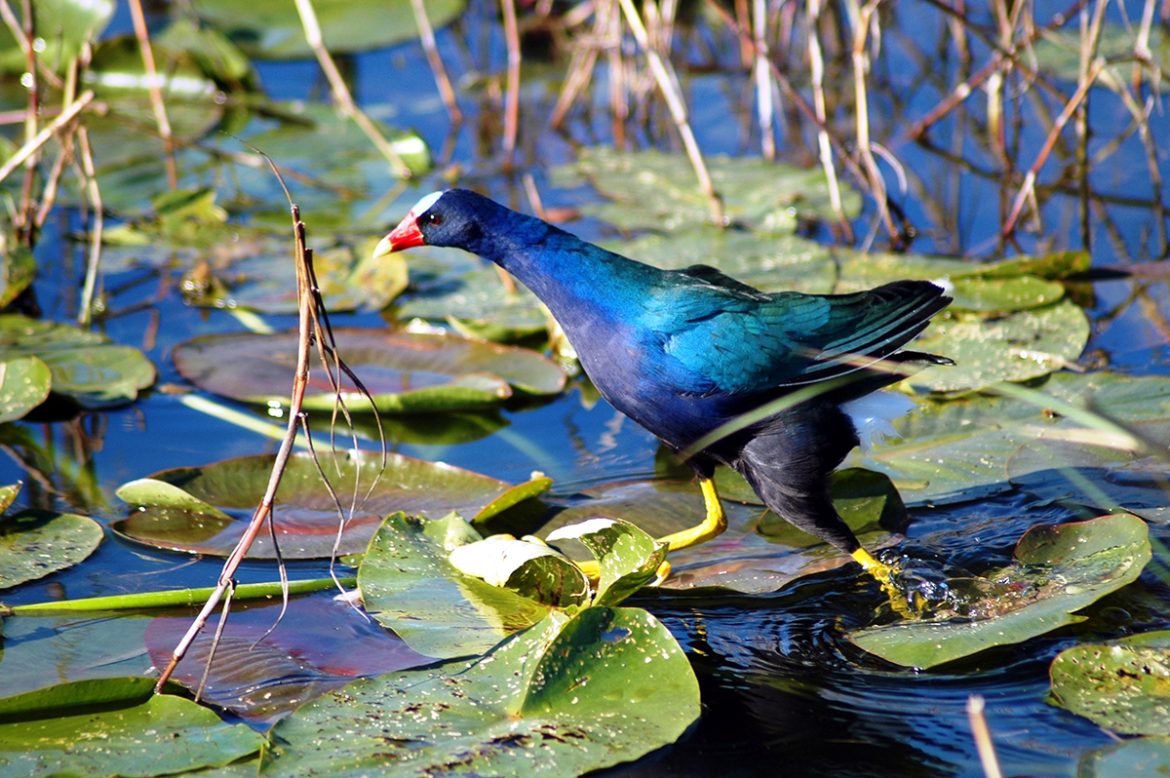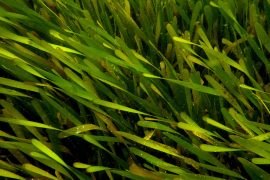Mississippi sportsmen can hunt abundant game with little pressure and very liberal limits for several species that many people probably don’t even know exist.
The most common and widespread of the two gallinules, common gallinules or moorhens closely resemble American coots with greenish-gray bodies, charcoal tops and white trimmings. Its most striking feature, a bright orange chicken-like bill tipped in yellow distinguishes it from coots and ducks. A red forehead patch makes another excellent field mark.
One of the most striking game birds, purple gallinules exhibit blue and green body feathers, purple heads, long yellow legs, white rumps and red bills with yellow tips. Bright blue forehead patches distinguish purple gallinules from their drab common cousins. Both gallinule species thrive in freshwater marshes, reedy river shorelines and other wetlands.
The largest of the rails, king rails also prefer freshwater marshes to brackish or salty systems. Sporting long, slightly curved bills, kings show rich chestnut and cinnamon coloring on their faces, necks and breasts.
Also called marsh hens, clapper rails look similar to their regal cousins, but with grayish-brown under parts, chestnut backs and grayish-white bars under their rumps. Clappers prefer brackish to salty marshes. They thrive in tidal marshy deltas of coastal rivers like the Pearl and Pascagoula. People often hear their loud cackling reverberating over the grass.
Sportsmen might also encounter two diminutive rail species. About the size of a quail, sora rails feature dark grayish-brown upperparts with black throats, blue-gray faces and black and white stripes on their lower flanks with chicken-like bills. Although the most widespread and common of the rail family, soras rarely venture far from their thick vegetative jungles.
More often heard than seen, diminutive sora rails make a slow ker-whee whistle or a descending whinny. Sora rails also prefer freshwater wetland systems with tall reeds and canes, although they sometimes venture into brackish marshes or even wet crop fields.
Another common and widespread small rail, Virginias resemble half-scale kings with dark brown heads and backs, orange legs and long, curved bills. Patches of gray splashing on their cheeks distinguish these rails from their cousins.
Rails and gallinules typically run from danger rather than fly. They can disappear easily into thick reeds. With their long toes, gallinules deftly walk across floating grass, lily pads or other matted vegetation. Sportsmen might spot rails or gallinules searching for insects, small crustaceans and other morsels on mudflats at low tide.
Sportsmen don’t need to hunt rails and gallinules at daybreak. In addition, the birds do not respond to decoys or calls, so sportsmen must go looking for them. Since these birds live in thick, soggy vegetation, use a small boat to hunt them.
Hunters cannot shoot migratory birds from boats under power until the engine stops running and the forward progress ceased. However, people can hunt from human-powered craft like canoes or kayaks. During the September teal or regular waterfowl seasons, some people paddle for rails and gallinules after the morning duck hunt ends.
Many people hunt alone, but others hunt in teams. One person in the bow remains ready to shoot while another person paddles, positions the boat and acts as spotter. This type of hunting offers an excellent way to introduce children to the sport.
For more specific details on season dates and limits, see www.mdwfp.com.





